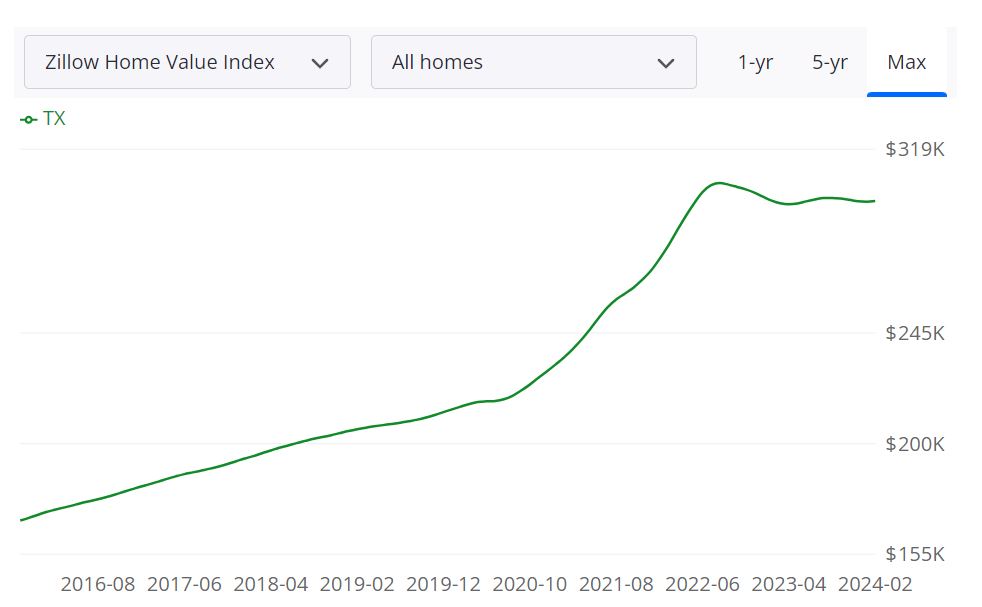Are Texas Home Sales Dropping? The answer is no. The Texas housing market defies expectations, presenting a complex picture of resurgent sales, rising prices, and a cautious construction sector. After a December decline, home sales rebounded significantly in January with a robust 14.6% increase, defying analyst predictions in a climate of persistent high mortgage rates.
According to the data from the Texas Real Estate Research Center, this surge was felt across the state's major cities, with Houston leading the charge with a remarkable 37.3% jump in sales compared to the previous month.
Buyers on the Move, Prices Respond
The sales rebound wasn't an isolated event. The average home price grew in tandem, rising over $9,000 since December. The median home price reached $341,840, with Houston and Dallas experiencing the most significant gains. This price growth indicates a market where buyer demand remains strong and sellers are able to command premium prices. Notably, Austin, which previously saw the hottest price surge, experienced a slight moderation in January, suggesting a potential tempering of that market.
Inventory Levels Shift: A Potential Rebalancing Act
The landscape of available homes also saw some movement. Active listings experienced a slight rise, suggesting a potential shift towards a more balanced market. This could provide some relief to buyers who faced limited options in the past. However, the bigger story lies in the surge of new listings to 43,817, with San Antonio leading the way with a noteworthy 14% increase. This influx of new listings could help satiate buyer demand and potentially moderate future price increases, creating a more sustainable market equilibrium.
Construction Activity: A Mixed Bag
While the sales and price trends painted a positive picture, construction activity offered a more nuanced perspective. Single-family construction permits increased by 1.8%, suggesting a potential pipeline of future inventory. This is a positive sign for a market potentially facing supply constraints. However, single-family starts dipped slightly, indicating a cautious approach from builders navigating a market with high material costs and rising interest rates. Notably, Austin reported the only monthly increase among the major metros in construction starts, suggesting continued confidence in that particular market.
Mortgage Rates: A Persistent Obstacle
Despite retreating from their 2023 peak, mortgage rates remain elevated. The 30-year fixed-rate mortgage rose to 6.64%, presenting a continued obstacle for potential buyers. This hike in borrowing costs creates a affordability hurdle, particularly for first-time homebuyers. However, the January sales surge suggests that some buyers are willing to adapt to the new mortgage rate environment, potentially by adjusting their budget, preferred home size, or geographical preferences.
Market Outlook: Navigating Uncertainty
The Texas housing market appears to be in a state of flux, balancing positive signs with some lingering uncertainties. The strong sales rebound and rising prices indicate continued buyer demand, fueled by a robust Texas economy and potentially an influx of new residents. However, construction activity presents a mixed picture, with the rise in permits suggesting future inventory growth, while the dip in starts hints at builder caution. Mortgage rates remain a hurdle, but January's sales figures suggest that some buyers are adjusting to the new normal.
Looking Ahead: Key Questions and Regional Considerations
In the coming months, it will be interesting to see if the sales increase can be sustained, particularly as mortgage rates remain high. Additionally, how construction activity unfolds will be a key indicator of the market's overall health. Will builders ramp up starts in response to the sales surge, or will they remain cautious due to high costs and rising interest rates? The answers to these questions will help determine the trajectory of the Texas housing market in the near future.
It's important to note that the Texas housing market is vast and diverse, with regional variations likely to persist. While this analysis provides a general overview, potential homebuyers and sellers should stay informed about trends specific to their city or area. Consulting a local real estate professional can be invaluable in navigating the complexities of the Texas housing market. Local experts can provide insights into specific neighborhoods, price points, and market dynamics that can significantly impact the buying or selling process.
For example, a buyer in the highly competitive Austin market may need to adopt a more aggressive strategy compared to a buyer in a smaller Texas city with a more balanced market. Similarly, sellers in different regions may experience varying levels of activity and price appreciation. By staying informed about local trends and seeking guidance from a qualified professional, buyers and sellers can make informed decisions in the dynamic Texas housing market.



